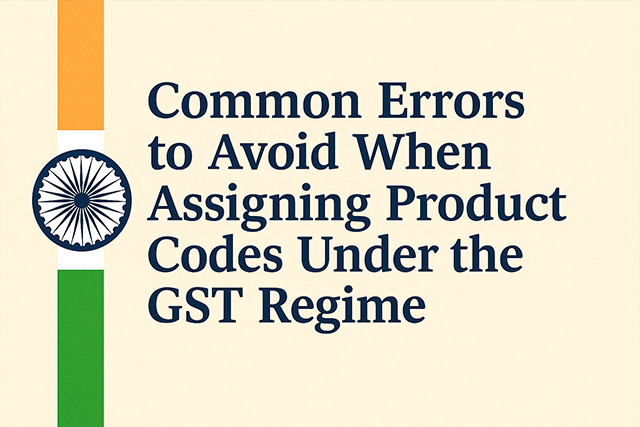
New Delhi, Aug. 5 -- Are you aware that over 14 million GST taxpayers are currently filing returns in India?
This number is expected to increase rapidly every year. However, with so many people involved, the burden of tax compliance will be particularly complicated, especially for first-timers.
This article will examine common mistakes in assigning product codes under the GST regime. Knowing these errors is crucial because it helps businesses ensure accurate tax calculation, smooth compliance and reduces the risk of penalties or denied input tax credit claims.
7 Common Errors to Dodge While Filing GST Forms
1. Entering Wrong or Invalid HSN/SAC Codes
Many companies choose the HSN code of goods or the SAC code of services inappropriately by not having full knowledge of the product or service. This may lead to incompatible tax prices, invalidate the validity of invoices, and cause disputes with vendors or customers.
Solution: Whenever you are cross-checking the codes, ensure to compare with the latest government notifications and verify the most authentic GST portal or HSN directory.
2. Non-Update of Codes According to the Latest Notifications
The GST Council changes taxation rates and assigns HSN/SAC codes partially and occasionally. Not keeping up with pace can cause one to use old codes, which translates to non-compliance and subsequent fines.
Solution: Consider setting up procedures and time tables to review GST changes coordinately and update product codes.
3. Improperly Recording Composite or Mixed Supplies
Businesses often misclassify composite supplies, leading to incorrect tax rates and code usage.
Solution: Bundle products that pose a major supply issue and these should be analysed carefully. Your workforce must code them as per the GST requirements.
4. Exemptions and Concessions Ignored
Many institutions ignore special provisions, missing exemptions or concessional rates applicable to their product category, especially for small transactions or specific goods.
Solution: Before assigning product codes under the GST regime, develop a habit of checking the most recent list of exemptions under GST as well as notifications.
5. Failure to Validate Product Descriptions
One of the most common errors that would result in more audits and reconciliation processes is a mismatch of the HSN/SAC code to the description of the product.
Solution: You should be sure that the product information on the invoice and the GST return is precisely in line with the code that you have selected. A simple HSN code search before filing can save you from unnecessary complications later.
6. Inconsistent Code Application Across Documents
GST collections reached Rs.1,89,803 crore in April 2025, marking a 10.7% year-on-year growth. However, despite this positive trend, there is a risk of mismatch amongst some companies applying different codes on the same product on invoices, e-invoices and GST returns, leading to potential compliance challenges. Solution: The entrusted employees need to be consistent and automatically assign the codes to the accounting systems.
7. Overlooking E-Invoice Validation Errors
Common e-invoicing errors include invalid HSN codes, mismatched GST rates for specific codes, duplicate serial numbers in item lists and incorrect calculation of item values.
Solution: Implement quality control checks and align your ERP system with IRP validations to minimise such errors.
Conclusion
With several GST forms filed in a financial year, accurately assigning product codes under the GST regime is crucial for smooth and error-free tax compliance. Avoiding common errors helps businesses minimise audit risks and ensures smooth input tax credit claims. Regular updates, consistent coding and system validations are key to maintaining compliance and fostering trust with tax authorities in the evolving GST landscape.
No Techcircle journalist was involved in the creation/production of this content.
Published by HT Digital Content Services with permission from TechCircle.
